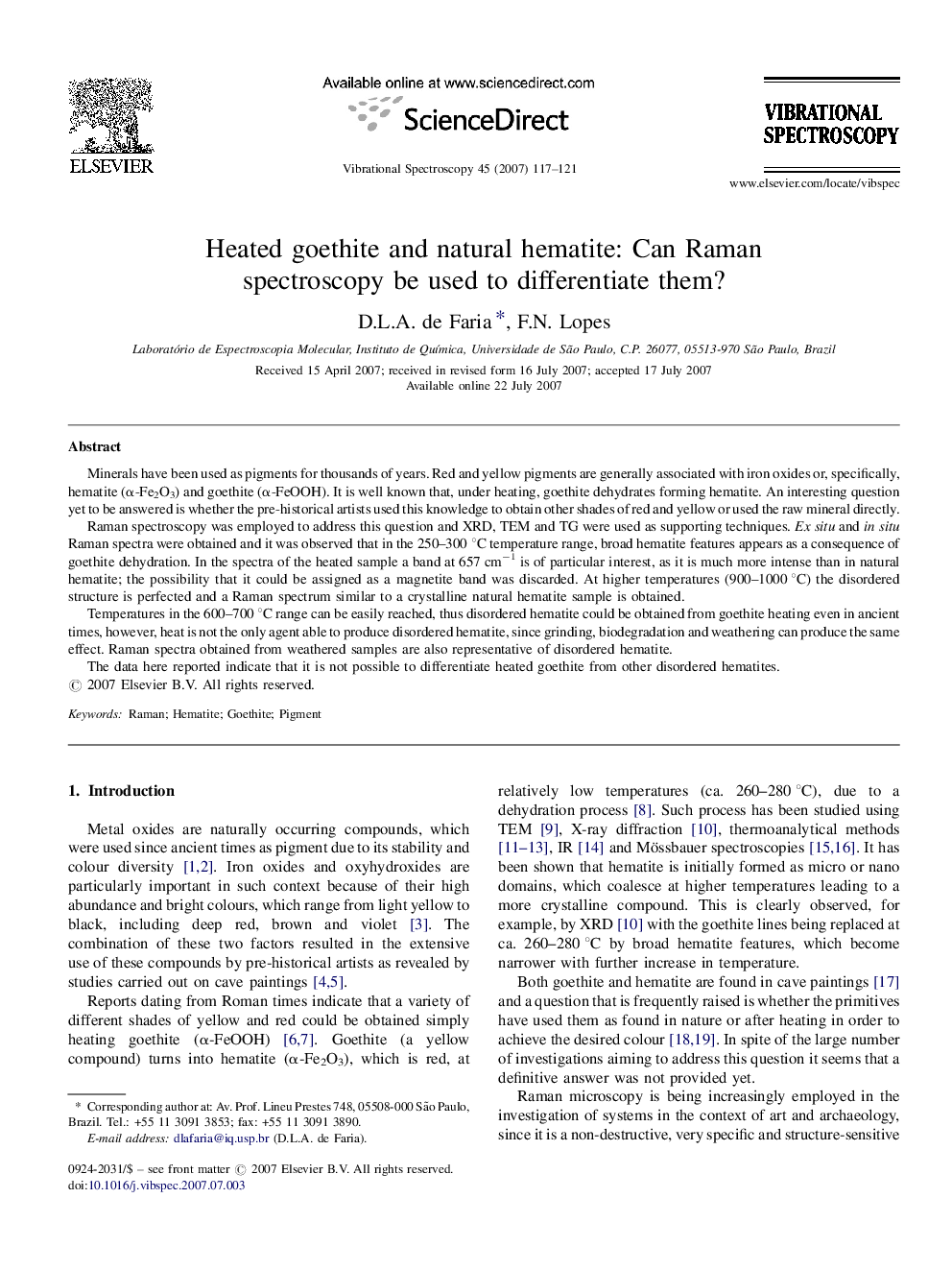| Article ID | Journal | Published Year | Pages | File Type |
|---|---|---|---|---|
| 1250424 | Vibrational Spectroscopy | 2007 | 5 Pages |
Minerals have been used as pigments for thousands of years. Red and yellow pigments are generally associated with iron oxides or, specifically, hematite (α-Fe2O3) and goethite (α-FeOOH). It is well known that, under heating, goethite dehydrates forming hematite. An interesting question yet to be answered is whether the pre-historical artists used this knowledge to obtain other shades of red and yellow or used the raw mineral directly.Raman spectroscopy was employed to address this question and XRD, TEM and TG were used as supporting techniques. Ex situ and in situ Raman spectra were obtained and it was observed that in the 250–300 °C temperature range, broad hematite features appears as a consequence of goethite dehydration. In the spectra of the heated sample a band at 657 cm−1 is of particular interest, as it is much more intense than in natural hematite; the possibility that it could be assigned as a magnetite band was discarded. At higher temperatures (900–1000 °C) the disordered structure is perfected and a Raman spectrum similar to a crystalline natural hematite sample is obtained.Temperatures in the 600–700 °C range can be easily reached, thus disordered hematite could be obtained from goethite heating even in ancient times, however, heat is not the only agent able to produce disordered hematite, since grinding, biodegradation and weathering can produce the same effect. Raman spectra obtained from weathered samples are also representative of disordered hematite.The data here reported indicate that it is not possible to differentiate heated goethite from other disordered hematites.
